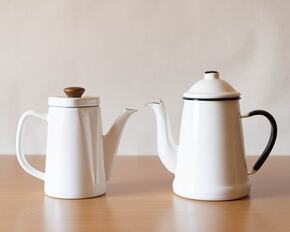Causes and effects of enamel frit stress
The degree of damage caused by stress to enamel products is determined by the elasticity, compressive and tensile strength and thermal expansion of the enamel glaze. If the generated stress exceeds the compressive and tensile strength of the enamel, cracks or delamination will occur.
There are many reasons for permanent stress, the most important of which is the difference in thermal expansion coefficient between the enamel layer and the metal blank. When the cooling rate after firing remains unchanged, the larger the difference in expansion coefficient between the ceramic layer and the metal is. , The greater the permanent stress generated, the more likely to produce cracks; when the difference in expansion coefficient between the ceramic layer and the metal is not large, or even the same, the faster the cooling rate after firing, the greater the permanent stress generated Larger, the more easily the porcelain layer will crack or peel off.

The stress between the porcelain layer and the metal is also related to the softening temperature of the glaze and the elasticity of the porcelain layer. The higher the softening temperature of the enamel, the higher the temperature of the product when it is fired out of the furnace, the greater the temperature difference from high temperature to room temperature, and the greater the stress generated; if the enamel has better elasticity, the cushioning performance will be better, and the porcelain will be caused by stress. There is less chance of layer cracking. Secondly, the crack or de-porcelain of the porcelain layer caused by stress is also related to the thickness of the porcelain layer and the thickness of the metal embryo. When the thickness of the metal blank body is constant, the elasticity decreases as the thickness of the ceramic layer increases. Therefore, the chance of cracking or de-porcelain of the ceramic layer caused by permanent stress will also increase; when the thickness of the ceramic layer remains unchanged, As the thickness of the embryonic body increases, the chance of cracking or de-ceraming of the porcelain layer caused by permanent stress will decrease. In order to reduce the possibility of cracks or delamination, it is advantageous to appropriately reduce the thickness of the porcelain layer and increase the thickness of the body.
The shape of the embryo body and the mechanical strength of the embryo body are also related to the cracking or de-ceraming of the porcelain layer caused by permanent stress. Generally speaking, if the shape is flat, especially the inner surface of the concave spherical shape, the ceramic layer is not easy to crack or de-porcelain, and the outer surface of the spherical shape is easy to de-porcelain. The chance of this kind of de-ceramic is also related to the radius of curvature of the spherical surface. The smaller the radius of curvature, the more chances of cracking or de-porosing of the porcelain layer caused by stress.
The magnitude of the temporary stress in the porcelain layer has a great relationship with the thermal conductivity of the enamel. When the product is in use, due to the poor thermal conductivity of the ceramic layer, uneven expansion or contraction will occur when heated or cooled unevenly, resulting in a large stress.